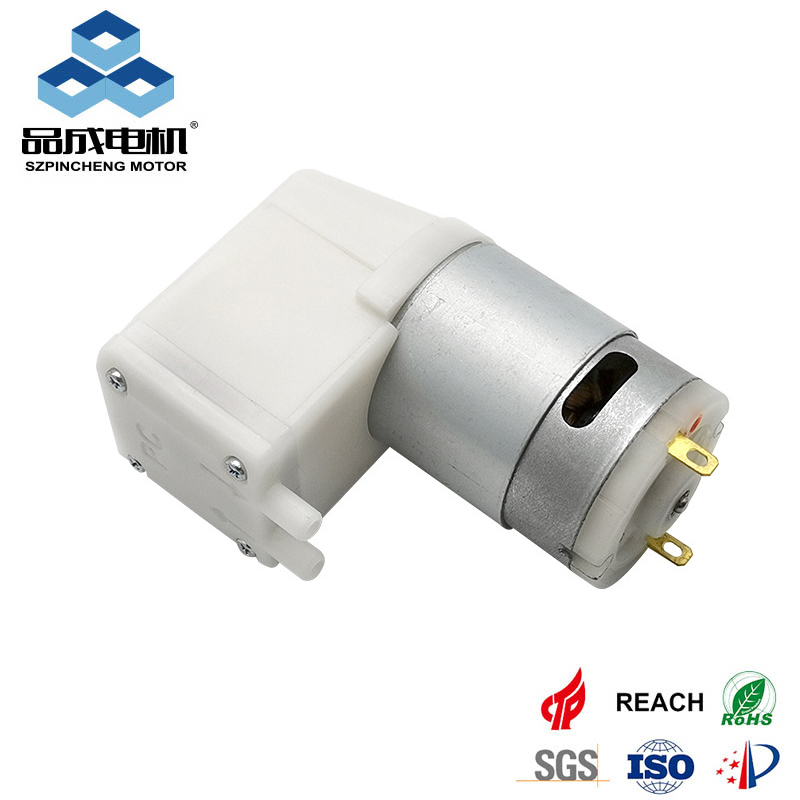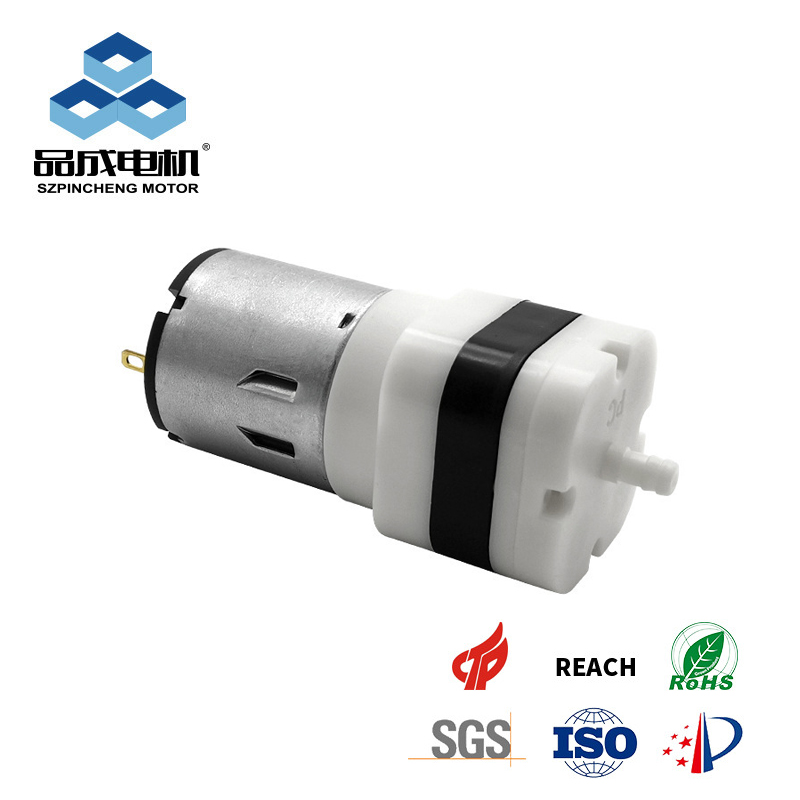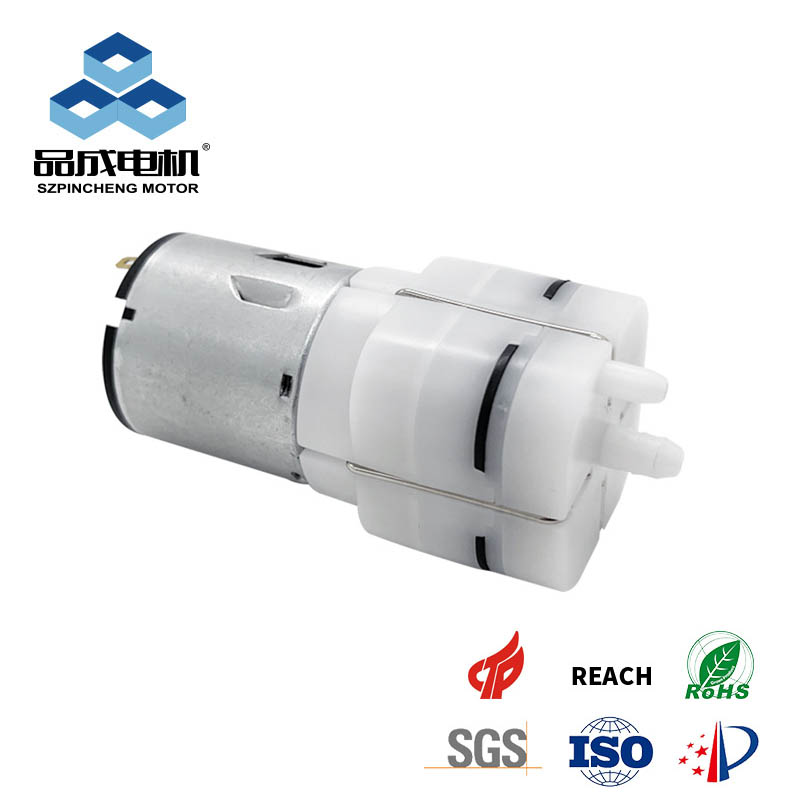Defining Vacuum Pressure: The Intensity Factor
The Essence of Vacuum Pressure
Vacuum pressure, typically measured in units such as inches of mercury (in-Hg), kilopascals (kPa), or millibar (mbar), quantifies the pressure level below atmospheric pressure that a system can achieve. In practical terms for micro vacuum pump applications, vacuum pressure represents the "strength" or "intensity" of the vacuum force. It indicates how effectively the pump can create a pressure differential and is particularly crucial for applications requiring strong holding force or the ability to overcome system resistance.
Measurement and Significance
When evaluating a 12v vacuum pump, the maximum vacuum pressure specification indicates the ultimate pressure difference the pump can generate under ideal conditions. This parameter becomes especially important in applications like vacuum gripping, where sufficient holding force must be maintained, or in analytical instruments where specific pressure levels are required for proper operation. Understanding that vacuum pressure measures the system's ability to create a pressure differential helps designers select appropriate DC vacuum pump models for applications where force or specific pressure conditions are critical.
Understanding Flow Rate: The Capacity Factor
Fundamentals of Flow Rate
Flow rate, typically measured in liters per minute (LPM) or cubic feet per minute (CFM), quantifies the volume of gas or air a micro vacuum pump can move through the system within a specific time period. This parameter represents the "capacity" or "throughput" of the vacuum system and becomes particularly important in applications requiring rapid evacuation, continuous gas removal, or handling of larger volumes.
Application Implications
The required flow rate varies significantly across different applications. A low power vacuum pump used in medical aspiration needs sufficient flow to remove fluids effectively, while laboratory equipment for degassing might prioritize different flow characteristics. Understanding that flow rate represents the system's capacity to handle gas movement helps engineers match micro vacuum pump capabilities to application demands involving volume transfer or rapid pump-down requirements.
The Critical Interrelationship: How Pressure and Flow Interact
Inverse Relationship Principles
In vacuum system design, particularly with DC vacuum pump technology, pressure and flow rate maintain an inverse relationship that fundamentally affects system performance. As a micro vacuum pump works against higher vacuum pressure (deeper vacuum), the available flow rate decreases. Conversely, when operating against minimal pressure differential, the pump achieves its maximum flow rate capacity. This fundamental relationship means that no 12v vacuum pump can simultaneously deliver both its maximum vacuum pressure and maximum flow rate.
Performance Curve Interpretation
Manufacturers provide performance curves for micro vacuum pump models that graphically represent this pressure-flow relationship. These curves demonstrate how flow rate decreases as vacuum pressure increases, providing essential data for system designers. By analyzing these curves, engineers can predict how a specific low power vacuum pump will perform under their system's unique pressure conditions and select components that operate efficiently at their required working points.
Practical Applications and System Design Implications
Pressure-Dominated Applications
Applications that primarily require high vacuum pressure include vacuum chucking, vacuum forming, and scientific instruments requiring specific low-pressure environments. In these cases, selecting a DC vacuum pump optimized for high vacuum pressure becomes crucial, even if this means accepting lower flow rates. The system design should minimize volume and focus on maintaining pressure stability rather than rapid gas movement.
Flow-Dominated Applications
Applications requiring high flow rates include vacuum packaging, material conveyance, and large volume evacuation. For these uses, a 12v vacuum pump with high flow capacity at moderate vacuum levels often proves more effective than one designed for ultimate vacuum pressure. System design should prioritize minimal flow resistance through appropriate tubing sizing and efficient component layout.
Selection Criteria for Micro Vacuum Pumps
Analyzing Application Requirements
The selection process for a micro vacuum pump must begin with thorough analysis of the application's specific requirements. Determine whether the application demands high holding force (prioritizing vacuum pressure) or rapid gas removal (prioritizing flow rate). Many applications require a careful balance of both parameters, necessitating examination of performance curves to identify DC vacuum pump models that operate efficiently at the required working point.
System Characteristics Considerations
Beyond the basic pressure and flow requirements, consider additional factors such as the system volume, allowable pump-down time, and the presence of any leaks or gas loads. A low power vacuum pump might suffice for small, sealed systems, while larger volumes or systems with continuous gas generation may require higher flow capacity even at the expense of ultimate vacuum pressure.
Performance Optimization Strategies
Matching Pump to Application
Optimizing vacuum system performance begins with selecting the right micro vacuum pump for the specific application requirements. Study manufacturer performance curves to identify pumps that deliver the necessary flow rate at your required operating pressure. Avoid the common mistake of selecting based solely on maximum specifications, as 12v vacuum pump units typically operate somewhere between their maximum pressure and maximum flow capabilities in real-world applications.
System Design Optimization
Design the vacuum system to minimize compromises between pressure and flow requirements. Use appropriately sized tubing and components to reduce flow resistance. Implement vacuum reservoirs where practical to handle temporary high-flow demands without requiring continuous DC vacuum pump operation at maximum capacity. Consider multi-stage systems or parallel pump arrangements for applications demanding both high pressure and high flow under different operating conditions.
Troubleshooting Common Performance Issues
Diagnosing Pressure and Flow Problems
When vacuum systems underperform, systematically investigate both pressure and flow aspects. If the system fails to reach target vacuum levels, the issue may involve insufficient vacuum pressure capability, excessive system volume, or significant leaks. If pump-down times are excessive, the problem may relate to inadequate flow rate for the system volume or excessive flow restrictions. Understanding the distinction helps quickly identify whether the micro vacuum pump itself is underspecified or if system design issues are limiting performance.
Addressing Performance Limitations
Common performance issues often stem from mismatches between pump capabilities and system requirements. A low power vacuum pump struggling to maintain vacuum might need assistance from a vacuum reservoir, while systems with slow pump-down times might benefit from parallel pumps or units with higher flow capacity. Regular maintenance, including checking for leaks and cleaning filters, helps maintain both pressure and flow performance in 12v vacuum pump systems.
Advanced Considerations in System Design
Dynamic Performance Factors
In many practical applications, vacuum pressure and flow requirements change during operation. Understanding how DC vacuum pump performance varies across the pressure-flow continuum enables designers to create systems that adapt to changing conditions. Variable speed control, pressure regulation, and flow control mechanisms can help maintain optimal performance as system demands evolve.
Future Trends in Micro Vacuum Technology
Advancements in micro vacuum pump technology continue to improve both pressure and flow capabilities within compact form factors. Developments in motor design, bearing technology, and fluid dynamics enable modern 12v vacuum pump units to achieve performance levels previously available only in larger systems. These improvements continue to expand application possibilities while maintaining the space and power advantages of low power vacuum pump solutions.
you like also all
Read More News
Post time: Oct-09-2025




